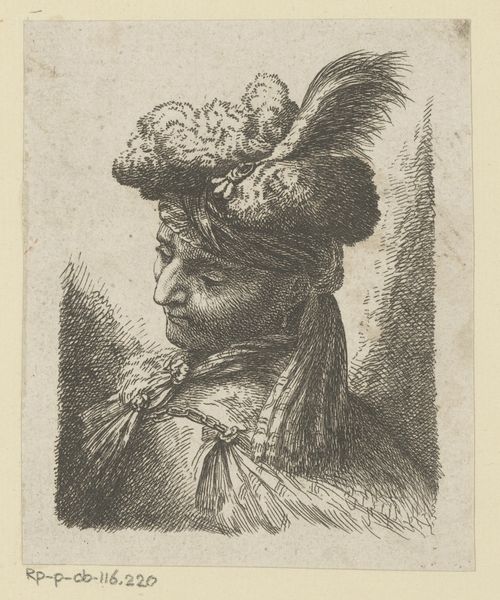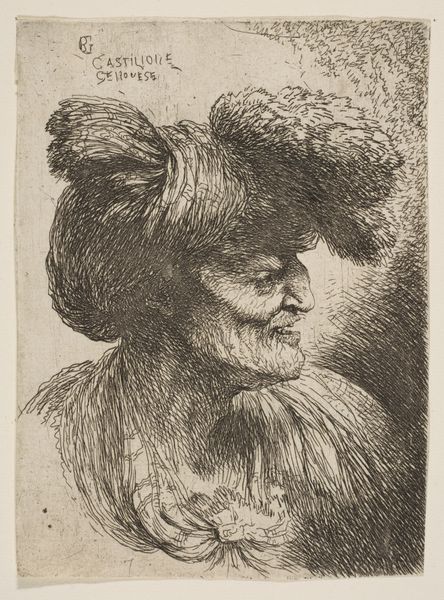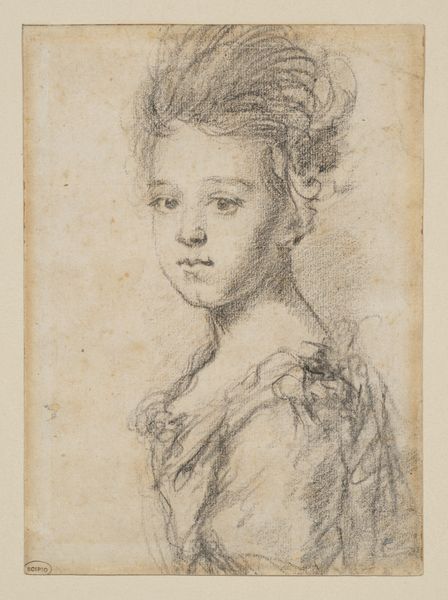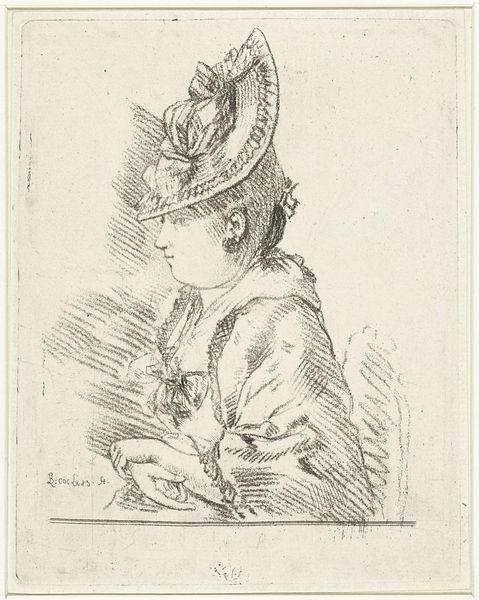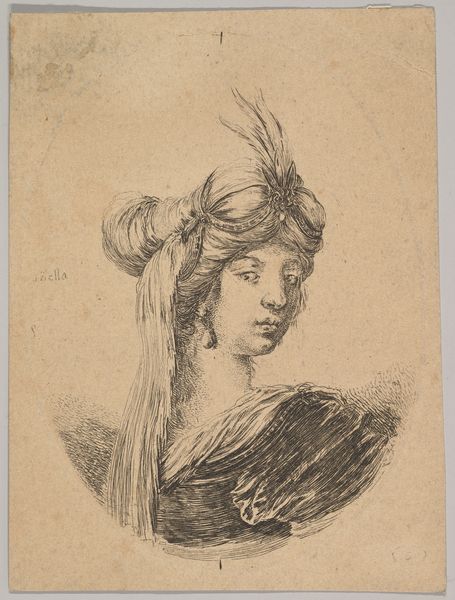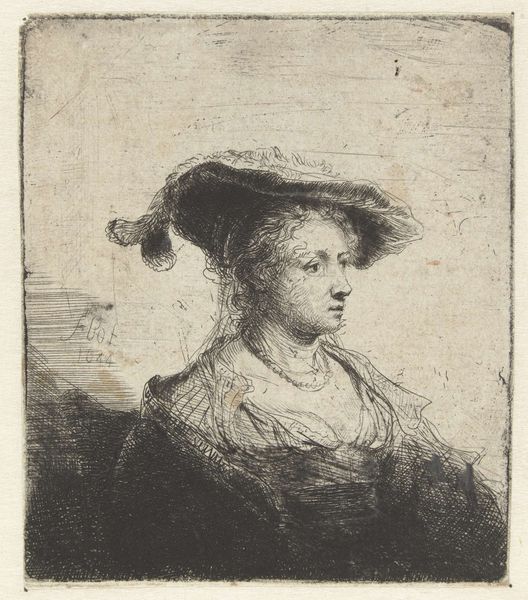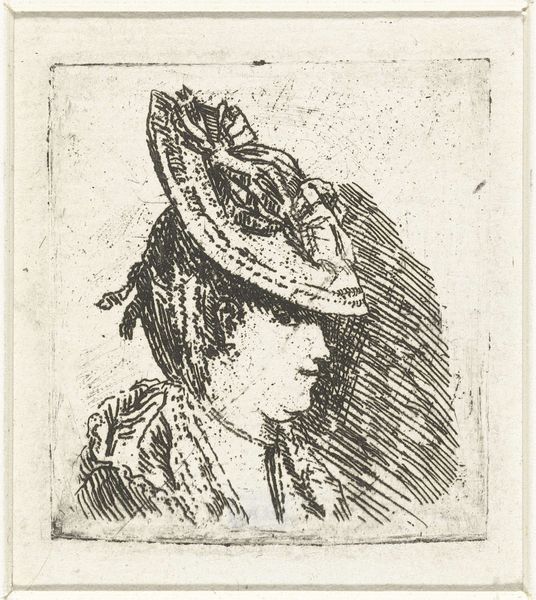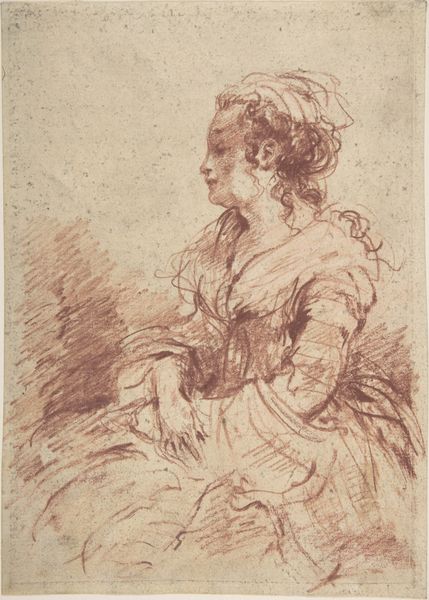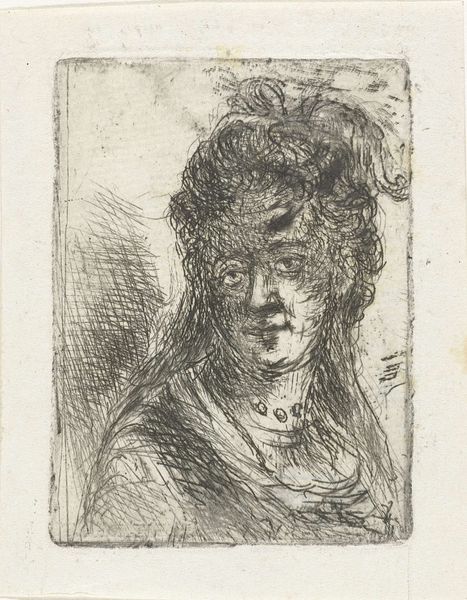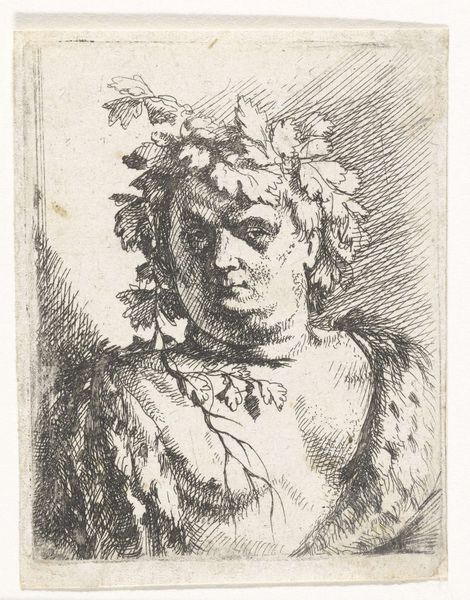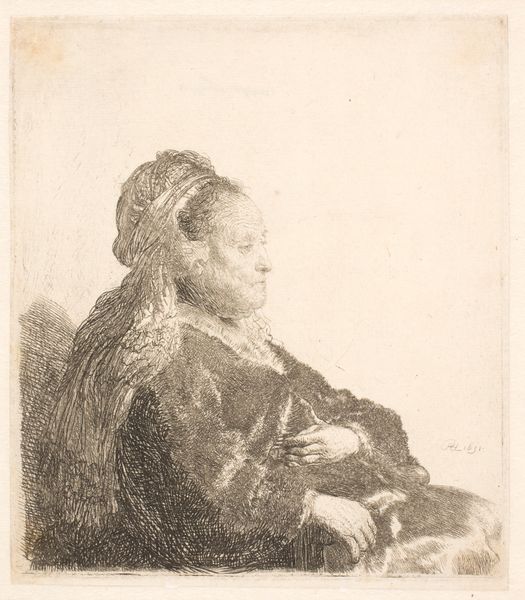
Young man facing three quarters right wearing a fur headdress with a plume, jewel and a headband, from "Small Heads in Oriental Headdress" 1640 - 1655
0:00
0:00
drawing, print, etching
#
portrait
#
drawing
#
baroque
# print
#
etching
#
11_renaissance
#
dress
Dimensions: Sheet: 8 3/8 × 5 7/8 in. (21.2 × 15 cm) Plate: 4 5/16 × 3 1/8 in. (11 × 8 cm)
Copyright: Public Domain
This print, by Giovanni Benedetto Castiglione, was made using etching, a printmaking technique that dates back to the 16th century. The artist covers a metal plate with a waxy, acid-resistant substance, then scratches an image into the coating with a pointed tool, exposing the metal. The plate is then immersed in acid, which bites into the exposed lines. Castiglione then likely burnished the plate to create smooth, polished surfaces. The varying depths of the etched lines are what give the print its tonal range. The artist's skill is clear in the way he coaxes so much detail out of a relatively simple process. Printmaking in the 17th century was closely tied to the expansion of knowledge. Prints could be reproduced and distributed far more easily than paintings, which made them a key medium for circulating ideas. By mastering the craft of etching, artists like Castiglione could participate in this expanding world. This print gives us a glimpse into the world of artistic production and consumption of the time, challenging any rigid separation of art, craft, and commerce.
Comments
No comments
Be the first to comment and join the conversation on the ultimate creative platform.
